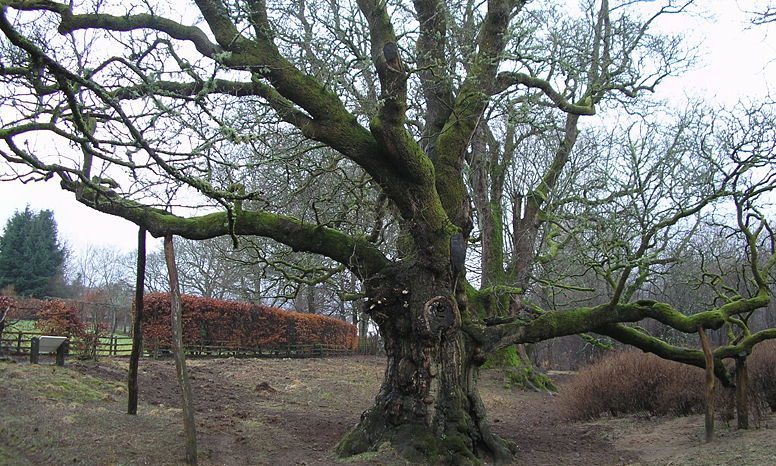A world famous Perthshire tree is in danger of splitting in half, conservationists have warned.
A campaign has been launched to save the celebrated Birnam oak, which attracts thousands of visitors to the region each year.
The iconic oak was made famous by William Shakespeare and is thought to be one of only two survivors from the centuries-old medieval forest immortalised in his play Macbeth.
But the Perth and Kinross Countryside Trust believes that unless urgent action is taken, the gnarled and ancient tree – and the neighbouring Birnam Sycamore – could be lost forever.
Next week, trustees will hold a public meeting to outline their action plan to safeguard the trees for future generations.
The news comes amid celebrations and events up and down the country to mark the 400th anniversary of Shakespeare’s death.
Trust manager Morag Watson said: “Obviously the trees are extremely elderly and we are constantly monitoring them.
“What we have found is that part of the oak’s trunk has rotted out, but its very long branches are continuing to grow.
“This is putting a lot of pressure on the trunk and if we don’t do anything about it now, it could simply split in half.”
She said: “What we are doing is looking at ways of shortening the branches. We believe we can do this without changing the appearance of the tree, but at the same time taking a lot of pressure off the trunk.”
She said a huge hole has also been found inside the Birnam sycamore, which is also a survivor of the famous forest. “We carried out an ultrasound scan on the tree and discovered it was hollow inside.
“Three people, standing up, could actually fit inside it.”
Ms Watson said: “The trees have stood at Birnam for a long, long time and we want them to stay there for hundreds of years to come.
“We are holding a public meeting because we know how important these trees are to people and we want to keep everyone up to speed with our plans.”
She said the oak continues to attract tourists from around the world. “It would be terrible if it was lost for good.”
The trust assessed the trees after the area was flooded during December when Storm Desmond took its toll on the region. Although the water is not thought to have caused much damage to the trees, it did affect the soil.
In Macbeth, the huge branches of trees in Birnam wood are used as camouflage by soldiers as they advance on the Scottish king.
It is believed that the bard was inspired during a visit to Perthshire and the north-east of Scotland in 1599.
The first 10ft of the oak’s trunk is hollow and its massive branches are propped up on handmade crutches.
The trust will set out its plan for the trees at a meeting in the Birnam Institute on Wednesday from 7pm.










